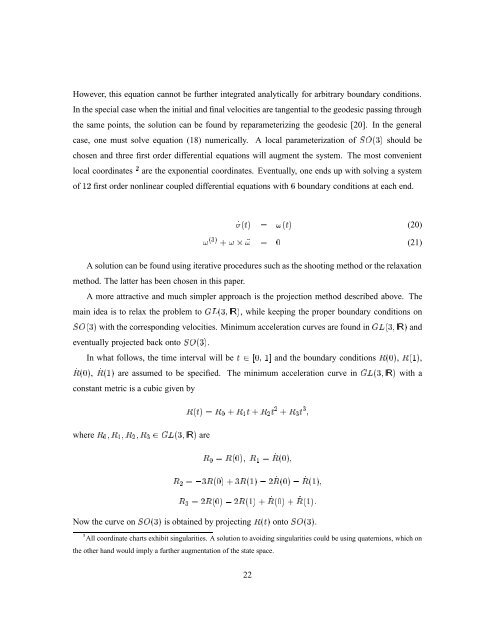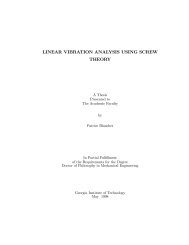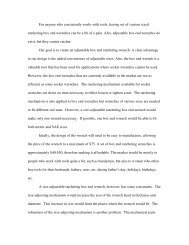New metrics for rigid body motion interpolation - helix
New metrics for rigid body motion interpolation - helix
New metrics for rigid body motion interpolation - helix
You also want an ePaper? Increase the reach of your titles
YUMPU automatically turns print PDFs into web optimized ePapers that Google loves.
However, this equation cannot be further integrated analytically <strong>for</strong> arbitrary boundary conditions.<br />
In the special case when the initial and final velocities are tangential to the geodesic passing through<br />
the same points, the solution can be found by reparameterizing the geodesic [20]. In the general<br />
case, one must solve equation (18) numerically. A local parameterization of SO(3) should be<br />
chosen and three first order differential equations will augment the system. The most convenient<br />
local coordinates 2 are the exponential coordinates. Eventually, one ends up with solving a system<br />
of 12 first order nonlinear coupled differential equations with 6 boundary conditions at each end.<br />
_(t) = !(t) (20)<br />
! (3) + ! ! = 0 (21)<br />
A solution can be found using iterative procedures such as the shooting method or the relaxation<br />
method. The latter has been chosen in this paper.<br />
A more attractive and much simpler approach is the projection method described above. The<br />
main idea is to relax the problem to GL(3; IR), while keeping the proper boundary conditions on<br />
SO(3) with the corresponding velocities. Minimum acceleration curves are found in GL(3; IR) and<br />
eventually projected back onto SO(3).<br />
In what follows, the time interval will be t 2 [0; 1] and the boundary conditions R(0), R(1),<br />
_R(0), _R(1) are assumed to be specified. The minimum acceleration curve in GL(3; IR) with a<br />
constant metric is a cubic given by<br />
R(t) =R 0 + R 1 t + R 2 t 2 + R 3 t 3 ;<br />
where R 0 ;R 1 ;R 2 ;R 3 2 GL(3; IR) are<br />
R 0 = R(0); R 1 = _ R(0);<br />
R 2 = ,3R(0) + 3R(1) , 2 R(0) _ , R(1); _<br />
R 3 =2R(0) , 2R(1) + R(0) _ + R(1): _<br />
Now the curve on SO(3) is obtained by projecting R(t) onto SO(3).<br />
2 All coordinate charts exhibit singularities. A solution to avoiding singularities could be using quaternions, which on<br />
the other hand would imply a further augmentation of the state space.<br />
22













